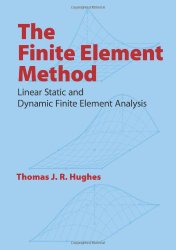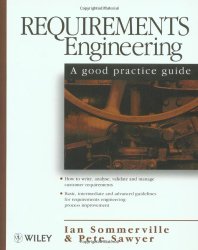 Finite Element Analysis Theory and Application with ANSYS
Finite Element Analysis Theory and Application with ANSYSby Saeed Moaveni
Publisher: Prentice Hall
ISBN: 0131890808
While many authors cover the theory of finite element modeling, this is the only book available that incorporates ANSYS as an integral part of its content. Moaveni presents the theory of finite element analysis, explores its application as a design/modeling tool, and explains in detail how to use ANSYS intelligently and effectively.
Now uses Excel in solving simple finite element problems. Adds a significant number of new problems. Incorporates the latest version of ANSYS throughout. A useful reference for mechanical, civil and environmental engineers.
 The Finite Element Method: Linear Static and Dynamic Finite Element Analysis
The Finite Element Method: Linear Static and Dynamic Finite Element Analysisby Thomas J. R. Hughes
Publisher: Dover Publications
ISBN: 0486411818
This text is geared toward assisting engineering and physical science students in cultivating comprehensive skills in linear static and dynamic finite element methodology.
Based on courses taught at Stanford University and the California Institute of Technology, it ranges from fundamental concepts to practical computer implementations. Additional sections touch upon the frontiers of research, making the book of potential interest to more experienced analysts and researchers working in the finite element field.
 Finite Element Analysis of Composite Materials using Abaqus
Finite Element Analysis of Composite Materials using Abaqusby Ever J. Barbero
Publisher: CRC Press
ISBN: 1466516615
Developed from the author’s graduate-level course on advanced mechanics of composite materials, Finite Element Analysis of Composite Materials with Abaqus™ shows how powerful finite element tools address practical problems in the structural analysis of composites.
Unlike other texts, this one takes the theory to a hands-on level by actually solving problems. It explains the concepts involved in the detailed analysis of composites, the mechanics needed to translate those concepts into a mathematical representation of the physical reality, and the solution of the resulting boundary value problems using the commercial finite element analysis software Abaqus.
 Finite Element Analysis of Composite Materials Using ANSYS
Finite Element Analysis of Composite Materials Using ANSYSby Ever J. Barbero
Publisher: CRC Press
ISBN: 1466516895
Designing structures using composite materials poses unique challenges, especially due to the need for concurrent design of both material and structure.
Students are faced with two options: textbooks that teach the theory of advanced mechanics of composites, but lack computational examples of advanced analysis, and books on finite element analysis that may or may not demonstrate very limited applications to composites. But there is a third option that makes the other two obsolete: Ever J. Barbero's Finite Element Analysis of Composite Materials Using ANSYS®, Second Edition.
 Introduction to Finite Element Analysis: Formulation, Verification and Validation
Introduction to Finite Element Analysis: Formulation, Verification and Validationby Barna Szabó, Ivo Babuška
Publisher: Wiley
ISBN: 0470977280
When using numerical simulation to make a decision, how can its reliability be determined? What are the common pitfalls and mistakes when assessing the trustworthiness of computed information, and how can they be avoided?
Whenever numerical simulation is employed in connection with engineering decision-making, there is an implied expectation of reliability: one cannot base decisions on computed information without believing that information is reliable enough to support those decisions. Using mathematical models to show the reliability of computer-generated information is an essential part of any modelling effort.
 Visual Models for Software Requirements
Visual Models for Software Requirements Requirements Engineering: A Good Practice Guide
Requirements Engineering: A Good Practice Guide Design Patterns: Elements of Reusable Object-Oriented Software
Design Patterns: Elements of Reusable Object-Oriented Software Software Testing and Quality Assurance: Theory and Practice
Software Testing and Quality Assurance: Theory and Practice Mastering Software Quality Assurance: Best Practices, Tools and Techniques for Software Developers
Mastering Software Quality Assurance: Best Practices, Tools and Techniques for Software Developers